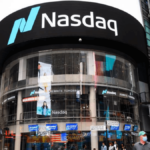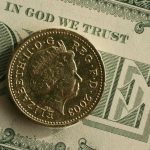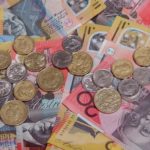GBP/USD traded little changed on Friday, after a number of positive reports were released in the UK. Yesterday, the pair touched the highest level since August 2011.
Having reached a session high at 1.6464 at 08:10 GMT, GBP/USD traded little changed at 1.6462 by 10:02 GMT, gaining 0.05% for the day. Support was likely to be received at January 2nd low, 1.6414, while resistance was to be encountered at January 2nd high, 1.6604, also the pairs highest since August 2011.
The sterling was supported after a report by the Nationwide Building Society (NBS) showed UK house prices rose in December, marking the best year for the property market since 2006.
The Nationwide Building Society reported that UK house prices rose 1.4% last month to reach an average 175 826 pounds, the highest since April 2008. Last year, prices surged by 8.4%, with London adding the biggest advance. According to NBS prices were mainly driven higher as the supply of new homes failed to keep up with the pace of an increase in demand, which was fueled by a strengthening UK economy.
The UK currency was further supported, following a report by the Bank of England, which revealed mortgage approvals rose to the highest level in almost six years in November.
Mortgage approvals in UK surged to 70 758 in November from upwardly revised 68 029 the previous month. This is the highest number of mortgage approvals since April 2008. Analysts had expected that mortgage approvals will increase to 69 700 in November.
“A large part of the pickup in the housing market can be attributed to further improvements in the labor market and the brighter economic outlook,” said Robert Gardner, chief economist at Nationwide, cited by Bloomberg.
Recent upbeat data raised speculations that the strong housing market may spur economic recovery, while in the same time the Bank of England may have to raise borrowing costs earlier than it had previously forecast.
Meanwhile, the greenback remained supported after the Federal Reserve Bank said on December 18th that it plans to reduce its monthly bond purchases in January to $75 billion from $85 billion, while also reinforcing its position that the benchmark interest rate will remain low for an extended period of time. According to the median estimate of economists surveyed by Bloomberg on December 19th, the Federal Reserve may reduce the purchases in $10 billion increments over the next seven meetings, before ending the program, which tends to devalue the US currency, in December 2014.
The US Department of Labor reported yesterday that the number of people, who filed for unemployment assistance during the week ended December 28th, dropped to 339 000 from the upwardly revised 341 000 in the preceding week. Analysts had projected that the number of initial jobless claims will increase to 342 000.
Also, according to data by the Institute for Supply Management (ISM), US companies operating in the sector of manufacturing increased their activity at a weaker, but still steady rate in December compared to November. The corresponding index, gauging the performance of manufacturing sector in the country, came in at a value of 57.0 in December, down from 57.3 in the previous month, which was also the highest level of the index in 2.5 years. Analysts had forecast that the manufacturing PMI will demonstrate a larger drop in December, to 56.9. Values above the key level of 50.0 are indicative of expansion in the sector.
Fed Chairman Ben Bernanke is scheduled to take a statement later today at an economics conference in Philadelphia, alongside Philadelphia Fed President Charles Plosser.
Elsewhere, having reached a session low at 1.3629 at 09:10 GMT, the pair’s lowest since December 20th, EUR/USD consolidated at 1.3634, losing 0.27% for the day. Support was likely to be received at December 20th low 1.3625, while resistance was to be encountered at January 2nd high, 1.3775.





